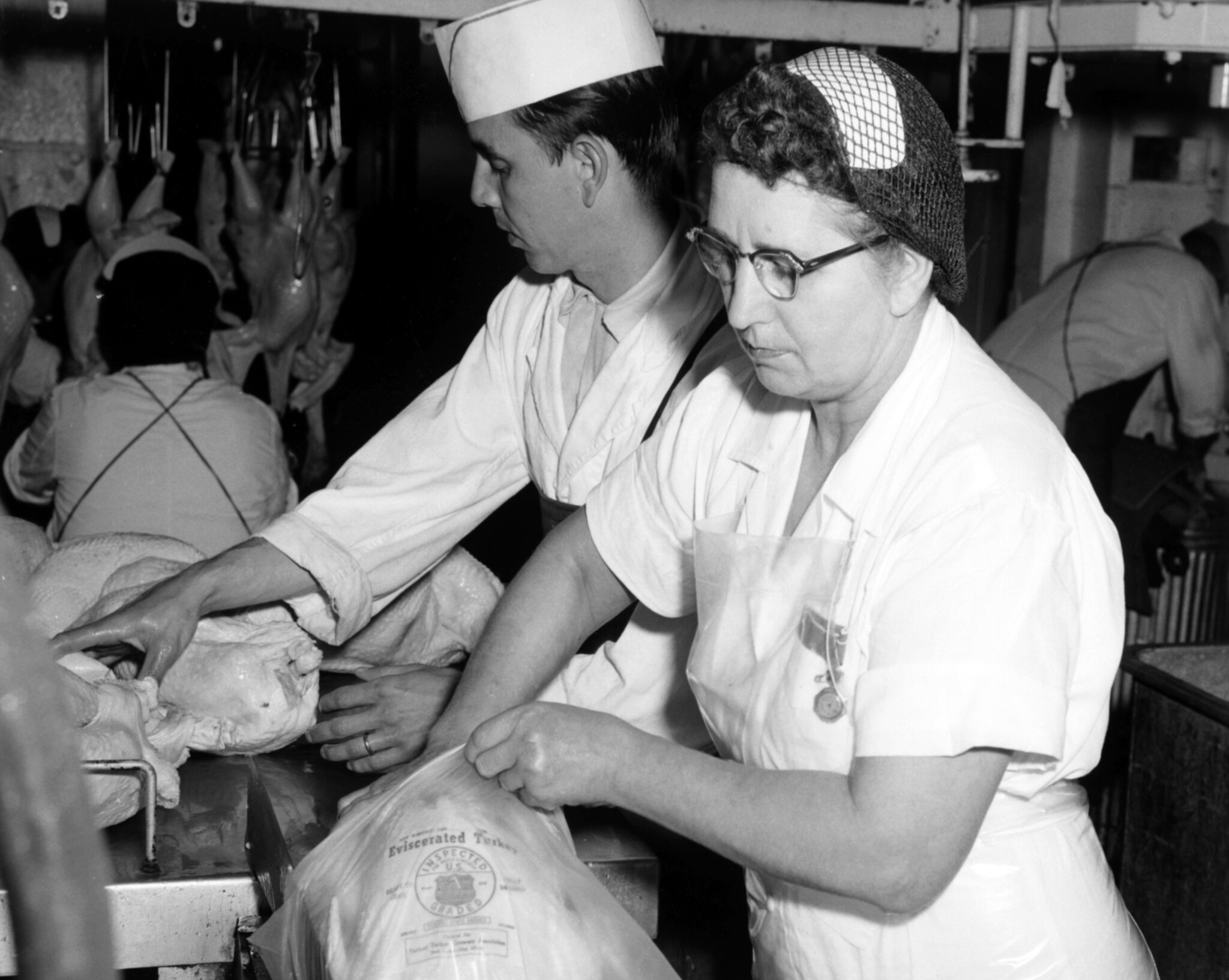
Food Inspector
Inspectors comprise the largest category of employees in the agency, with over 6,500 nationwide. Entry-level food inspectors in private commercial slaughtering plants provide the first line of defense against diseased and adulterated meat and poultry. They are responsible for much of the day-to-day in-plant inspection of animals before and after slaughter.
One career path for a food inspector is to the consumer safety inspector position. Consumer safety inspectors work in one or more privately owned meat, poultry and egg processing plants. They ensure the plant is operating within its written plans for HACCP, sanitation, and processing. In addition, they conduct regulatory oversight activities inside the plants in matters relating to other areas of consumer protection, e.g., misbranding.
Another career path for a food inspector is to the import inspector position. Import inspectors are stationed at ports and other points of entry to the United States. They make sure that products imported from other countries are as safe as those produced domestically.
Qualification Requirements
To qualify for an entry-level Food Inspector position, you must pass a written test and have either completed a 4-year course of study leading to a bachelor’s degree (with at least 12 semester hours in the biological, physical, mathematical, or agricultural sciences) or 1 year of job-related experience (in the food industry). This experience must demonstrate knowledge of sanitation practices and control measures used in the commercial handling and preparation of food products for human consumption. Qualifying experience should also demonstrate skill in applying, interpreting and explaining standards in a food product environment.
Do You Qualify for a Federal Inspector Position with the USDA?
Position Requirements
- Moderate light lifting, 30 pounds, with occasional lifting of up to 50 pounds.
- Repetitive motion of upper body and limbs (8 hours).
- Reaching above shoulders.
- Use of fingers—dexterity and normal sensation required.
- Both hands required.
- Walking (8 hours).
- Standing (8 hours), in limited space (2 x 4 feet).
- Climbing stairs and vertical ladders.
- Both legs required (prosthesis acceptable if full range of mobility is allowed).
- Near vision using appropriate vision screening device.
- Far vision correctable to 20/40.
- Normal depth perception.
- Normal peripheral vision (85 degrees temporally in each eye).
- Color vision allowing identification of subtle shades.
- Normal hearing. (with or without hearing aids)
- Ability to detect odors.
- Clear speech.
- Ability to palpate organs & note product differences.
- Working indoors and outdoors.
- Excessive heat.
- Excessive cold.
- Excessive humidity.
- Excessive dampness or chilling.
- Excessive noise, continuous.
- Slippery and uneven walking surfaces.
- Working around machinery with moving parts.
- Working around moving objects or vehicles.
- Working with hands in water.
- Working in close proximity to others.
- Protracted or irregular hours of work.
- Working with knives or other tools.
- Exposure to offensive odors such as manure, blood, etc.
- Possible exposure to noxious fumes.
- Will be required to wear appropriate safety protection.
- Sub-freezing temperatures
- Summer time temperatures at 80 to 90 degrees
- Rapid, constant repetitive motion with hands/wrists
Online Application Process
Review the job announcements available to the general public on the Job Opportunities page.
Click on the green "Apply" button of the job that is of interest to you. This will bring you to the full job announcement posted in USAJOBS.gov. Carefully review the full job announcement and follow the detailed application instructions.
While in your USAJOBS account, you will have the opportunity to select one of your stored USAJOBS resumes, or to create or upload a new resume.
Your resume should include:
- Personal information such as your full name, complete mailing address, day/evening telephone numbers and current email address.
- Details of your work experience relevant to this position as described in the major duties including work schedule, hours worked per week for each position, dates of employment (Day/Month/Year), title, series, grade (if applicable) and supervisor’s phone number and whether or not the supervisor may be contacted for a reference check.
- Education: College degrees earned; submit any transcripts.
Upload any applicable documents such as your transcripts; resume; and veterans' preference documents.
- If you are qualifying for the position based on education, a copy of your official transcript(s) is required.
- To receive veterans' preference, a copy of your Member 4, DD-214 is required. You must also submit your signed SF-15 form and supporting documentation from the VA if you are claiming 10-point preference.
After you have previewed and selected the resume you want to use and uploaded required documents, you will need to review and acknowledge the certification statement. To complete your online application, click on Begin Application Submission. "Complete" status certifies that a response has been provided for all mandatory questions (annotated with an *). This status does not indicate that other information/documentation as required in the announcement has been provided. You must ensure that all information/documentation as stated in the announcement is provided. Follow all the steps. Complete the biographical profile.
- Click on Submit Now to submit your application or on Submit Later to save your application and finish at a later time. Once you have submitted your application, you should see the following:
Application Form Status: Complete and Submitted
Your application has now been submitted
- You will receive an email acknowledging receipt of your online application.


